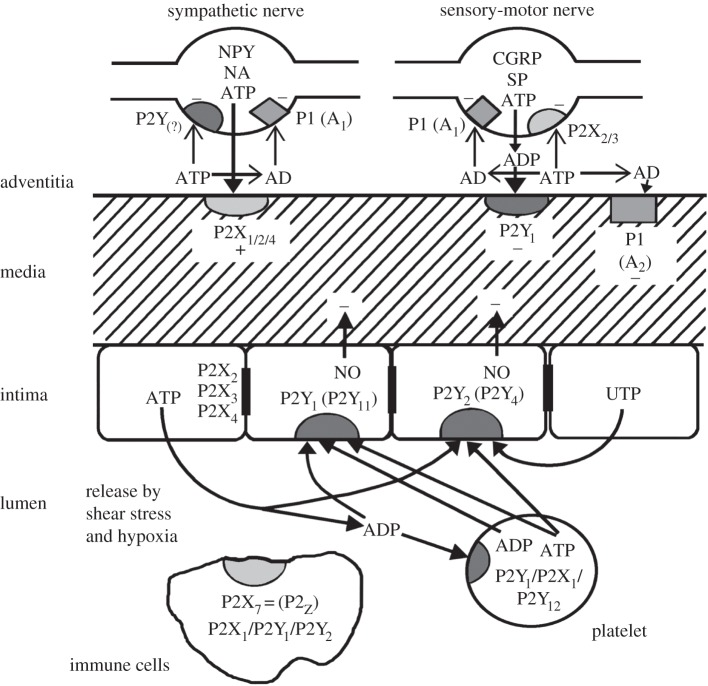Figure 1.
Short-term (acute) purinergic signalling controlling vascular tone. Schematic illustrating the main receptor subtypes for purine and pyrimidines present in most blood vessels. Perivascular nerves in the adventitia release ATP as a cotransmitter: ATP is released with noradrenalin (NA) and neuropeptide Y (NPY) from sympathetic nerves to act on smooth muscle P2X1 and, in some vessels, P2X2, P2X4 and P2Y2 purinoceptors, resulting in vasoconstriction. ATP is also released together with calcitonin gene-related peptide (CGRP) and substance P (SP) from sensory nerves during ‘axon reflex’ activity and broken down to adenosine diphosphate (ADP) to act on smooth muscle P2Y1 purinoceptors in some regions of some vessels resulting in vasodilatation. P1(A1) purinoceptors on nerve terminals of sympathetic and sensory nerves mediate adenosine (AD) (arising from enzymatic breakdown of ATP) modulation of transmitter release. P2X2/3 purinoceptors are present on a subpopulation of sensory nerve terminals. P1(A2) purinoceptors on vascular smooth muscle mediate vasodilatation. Endothelial cells release ATP and uridine 5′-triphosphate (UTP) during shear stress and hypoxia to act on P2Y1, P2Y2 and sometimes P2Y4 purinoceptors leading to the production of nitric oxide (NO) and subsequent vasodilatation. ATP, following its release from aggregating platelets, also acts on these endothelial receptors. Blood-borne platelets possess P2Y1 and P2Y12 ADP-selective purinoceptors as well as P2X1 receptors, while immune cells of various kinds possess P2X7, as well as P2X1, P2Y1 and P2X2 purinoceptors. P2X2, P2X3 and P2X4 receptors have also been identified on endothelial cell membranes. (Modified from [23], with permission from Lippincott Williams and Wilkins.)

